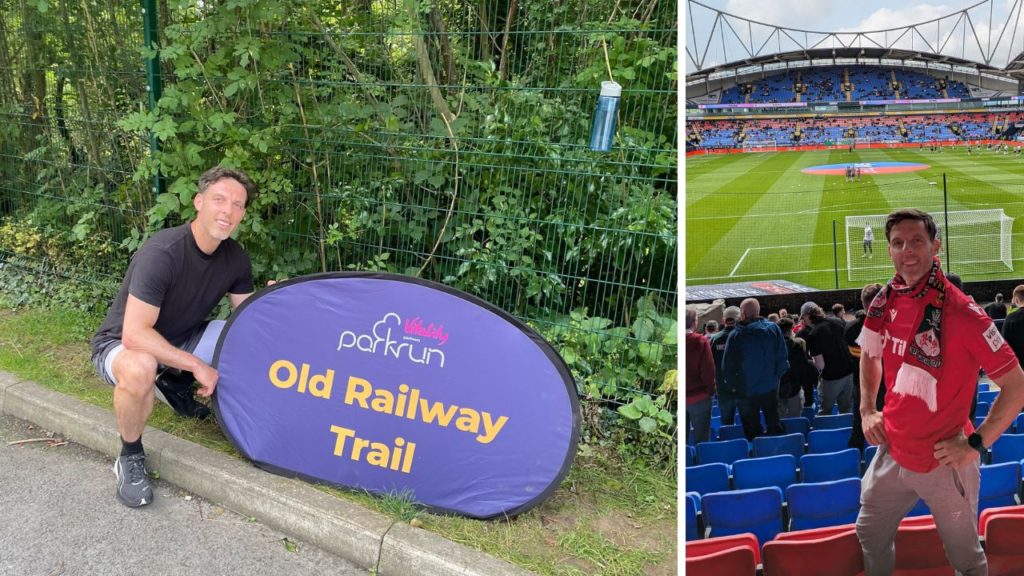Stride Length – This refers to how big are each of your strides. This is the other side to the coin of stride rate when it comes to running speed. An interesting element, is what do you do when you change speed. Most good runners increase their stride rate to go faster, so each step has the same force as before but you are just taking more of them. As speeds increase yet further so does stride length which requires more force into the ground which tires you out faster. To genuinely increase stride length, you would want to increase leg strength, the elastic ability to spring off the floor and / or reduce weight.
Arm Technique – The motion of your arms is linked to your stride rate. The general advice of a 90 degree bend in your arms and to use a big arm motion stems mostly from sprinting and probably does not apply to jogging. Analysis of top level marathon runners shows very few of them use this arm motion. If your stride rate is too slow then increasing arm motion speed is a method to increase foot speed, which may involve you using a smaller arm angle, e.g. the arm is more bent with hands higher up.
Technique vs Fitness – A note on running technique is that often people use a less than optimal method because their fitness cannot match a better run technique. When you use an optimal technique you will go a fair bit faster. If your fitness cannot handle this then your body will slow you down through changing a run technique element, e.g. slower stride rate. Using intervals is way to experiment with good technique whatever your fitness levels may be.
Training Techniques – Talking of intervals, while not an actual element of run technique itself, make sure you are using different running speeds and session types in training which I have covered previously. Good runners do not just run the same speed for the same distance every week. They have a mix of faster to slower sessions with shorter to longer distances.
What Does This Mean For You
If you are not into running then I’m surprised you got his far. Consider just building up to 10 minutes slowly as discussed in the 1km test. For more regular runners a good thing to do is to use your smart watch to look at your stride rate on a run. Are you running above 170 strides per minute? Does it increase as your running speed increases? You should then look to vary the stride rate and see how it affects the feel, speed and performance of your running. This should also tie into the foot strike vs leg swing element discussed above.
Ideal running technique is a personal issue with no hard rules for everyone (despite what most advice on the net implies). Do not be scared to experiment to find what is best for you. A final point to note is that technique is linked into your posture, weight, strength and fitness. So, the ideal technique for you today may change over time so be open to changes in the future.
Photo – Dong the park run in my hometown of Llangollen as I went back home to watch Wrexham play away in Bolton. A 20.47 in the park run and a great atmosphere in the ground albeit a boring 0-0 draw on the field,

Need Support Getting In Shape?
Changing your body on your own without support or an effective system usually ends in failure sadly. To avoid this outcome you can become one of my coaching clients either online or in person. I provide Holistic, Healthy & Sustainable Body Transformations. Contact me to discuss your goals further or see below for more details and the options available to you based on your location / preferences:
Worldwide (Online) – For transformations, coaching and support wherever you are in the world read more here>>>>
London (Battersea) – If looking for Personal Training Battersea please contact me. I am available for sessions in homes, private gyms or Personal Training Battersea Park. To see my locations please visit my Battersea Personal Trainer page>>
London (Oval / Kennington) – For Personal Training in Oval & Kennington please contact me. I am available for sessions in homes, private gyms or parks.
**************
Read My Book – The Grand Unified Theory of Weight Loss – My latest book is available in print, kindle/ebook and audio formats. You can read more about it and see where it is available here>>>
Follow Me – You can get more great advice, tips, hacks and more by following me on one of my social media channels. Follow Me>>>
Instagram>> You Tube>> Facebook>> Twitter>> Tik Tok>> My Weekly Newsletter>>
**************